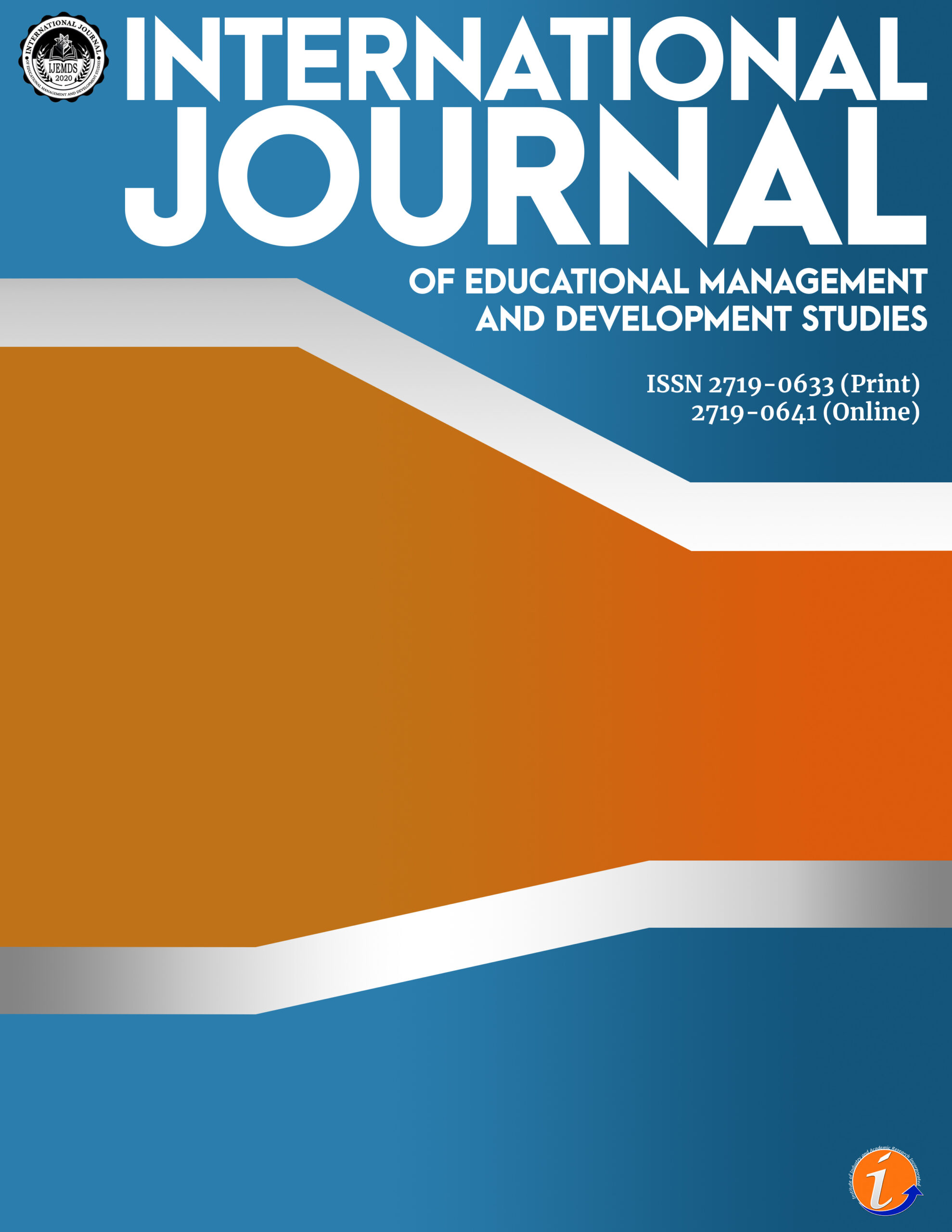Due to the pandemic, open and flexible learning has become the norm for schools and universities, where students get lessons through online classes or study modules. Acknowledging the difficulties of remote learning, many institutions allowed more flexibility by providing learners with increased choice and accessibility to suit their learning conditions. One is making online class attendance less mandatory compared to the pre-pandemic when attendance was strictly implemented in most schools. To a certain extent, this allowed students to study at their own time and pace and even assume work and home responsibilities. Hence, this study aims to determine the impact of attendance on students' academic performance in online synchronous classes in one of the state universities in the Philippines. Using descriptive quantitative analysis, the 210 students’ attendance in online classes were recorded, while their final grades served as an indicator of academic performance. The results showed that synchronous online attendance positively impacts students' academic performance. In general, students who regularly participate in online classes get a higher final grade. Furthermore, results showed a moderately positive relationship between these two factors using the Pearson correlation coefficient. Meanwhile, instructional support such as recorded lectures and supplementary materials prevented asynchronous students or those who could not participate in synchronous online classes from failing the course. This study recommends implementing more active learning strategies and in-class group work to avoid non-essential absenteeism and promote and encourage lecture attendance.
online learning, synchronous learning, class attendance, academic performance, recorded lectures
Percia V. Secreto. Corresponding author. Part-time college instructor at the College of Industrial Technology, Laguna State Polytechnic University. Holds a BS in Agribusiness Management and a Master of Professional Studies major in Education Management at the University of the Philippines Los Baños. Corresponding email: percia.secreto@lspu.edu.ph
Eudora C. Tabo. Associate Dean of the College of Industrial Technology at Laguna State Polytechnic University. Holds a Bachelor’s Degree in Industrial Education majoring in Architectural Drafting and Master of Arts in Teaching Technology and Home Economics
This paper is presented in the 3rd International Conference on Multidisciplinary Industry and Academic Research.
Altermatt, E. R. (2019). Academic support from peers as a predictor of academic self-efficacy among college students. Journal of College Student Retention: Research, Theory & Practice, 21(1),21-37.
Attendance Policy During the Covid-19 Pandemic. (2021, November 11). Attendance Works. https://www.attendanceworks.org/policy/
Bahian, M. E. V., Agapito, J. J. J., Arradaza, J. T., & Pita, C. C. (2020). Barriers to online learning amidst COVID-19 pandemic. Psychology and Education Journal, 57(9), 2252-2259.
Balahadia, F. F. (2022). Challenges of Information Technology Education Student’s Online Classes during the Covid-19 Pandemic in Selected Public Colleges and Universities in the Philippines. International Journal of Computing Sciences Research, 6, 877-892.
Bos, N., Groeneveld, C., Van Bruggen, J., & Brand‐Gruwel, S. (2016). The use of recorded lectures in education and the impact on lecture attendance and exam performance. British Journal of Educational Technology, 47(5), 906-917.
Benefits of Lecture Recordings and Classroom Recordings. (2021, March 1). IPVideo Corporation. https://ipvideocorp.com/2021/02/12/benefits-of-lecture-recordings-and-classroom-recordings/#:%7E:text=Increasing%20Accessibility%20and%20Comprehension,speed%20adjustment%20and%20closed%20captioning
Barcenas, J. M. A., & Bibon, M. B. (2021). Coping mechanism of Island school students on the problems encountered in modular distance learning. Int. J. Sci. Res. in Multidisciplinary Studies Vol, 7(12).
Bryan, T. K., Lutte, R., Lee, J., O’Neil, P., Maher, C. S., & Hoflund, A. B. (2018). When do online education technologies enhance student engagement? A case of distance education at the University of Nebraska at Omaha. Journal of Public Affairs Education, 24(2), 255-273.
Castroverde, F., & Acala, M. (2021). Modular distance learning modality: Challenges of teachers in teaching amid the Covid-19 pandemic. International Journal of Research Studies in Education, 10(8), 7-15.
Carrasco, M. 2021. First-Year Students Struggled With Online Learning Last Year. Inside Higher Ed. https://www.insidehighered.com/news/2021/08/25/first-year-students-struggled-online-learning-last-year
Davies, T. L., Cotton, V. K., & Korte, L. (2016). Student usage and perceptions of the value of recorded lectures in a traditional face-to-face (F2F) class. Journal of College Teaching & Learning (TLC), 13(3), 85-94. https://www.clutejournals.com/index.php/TLC/article/view/9714
Dey, I. (2018). Class attendance and academic performance: A subgroup analysis. International Review of Economics Education, 28, 29-40.
Dhingra, S., Pasricha, N., Sthapak, E., & Bhatnagar, R. (2021). Assessing the role of internal motivation and extrinsic factors on online undergraduate medical teaching in a resource-poor setting during Covid-19 pandemic in North India: an observational study. Advances in Medical Education and Practice, 12, 817.
Education and Technology. (2021, September 24). The World Bank. Retrieved August 8, 2022, from https://www.worldbank.org/en/topic/edutech
Elbilgahy, A. A., Mohamed Seliman, A., & Alemam, D. S. (2021). Exploring the relationship between academic problems, lecture attendance and academic performance among medical and nursing students: A cross-sectional study. International Journal of Novel Research in Healthcare and Nursing, 8(1), 547-556.
Elliott, C., & Neal, D. (2016). Evaluating the use of lecture capture using a revealed preference approach. Active Learning in Higher Education, 17(2), 153-167.
Farrell, O., & Brunton, J. (2020). A balancing act: a window into online student engagement experiences. International Journal of Educational Technology in Higher Education, 17(1), 1-19.
Frost, J. (2022, April 8). Interpreting Correlation Coefficients. Statistics By Jim. https://statisticsbyjim.com/basics/correlations/
Gorissen, P. (2012, September 24). Students and recorded lectures: survey on current use and demands for higher education | Research in Learning Technology. Research in Learning Technology. Retrieved June 27, 2022, from https://journal.alt.ac.uk/index.php/rlt/article/view/1276
Goulas, S., & Megalokonomou, R. (2020). School attendance during a pandemic. Economics Letters, 193, 109275.
Horn, D. (2020). Recorded Lectures are Not for Everyone: Lower-Performing Students Benefit from Attending Live Lectures | The Journal of Optometric Education. The Journal of the Association of Schools and Colleges of Optometry. https://journal.opted.org/article/recorded-lectures-are-not-for-everyone-lower-performing-students-benefit-from-attending-live-lectures/
Hsu, W.C., & Plunkett, S.W. (2016). Attendance and grades in learning programming classes. Proceedings of the Australasian Computer Science Week Multiconference.
IGI Global (2022). What is Class Attendance IGI Global. https://www.igi-global.com/dictionary/class-attendance/36206#:%7E:text=In%20the%20case%20of%20%E2%80%9Conline,definitions%20using%20our%20Dictionary%20Search.
Islam, A. (2021) An Analysis of Factors Influencing Academic Performance of Undergraduate Students: A Case Study of Rabindra University, Bangladesh (RUB). International Journal of Education. https://files.eric.ed.gov/fulltext/EJ1300829.pdf
Khanlarian, C., & Singh, R. (2015). Does technology affect student performance. Global Perspective on Accounting Education, 12, 1-22.
Kulal, A., & Rahiman, H. U. (2023). COVID-19 anxiety and uncertainty of classes: Devastating effect on students’ academic behavior and performance. F1000Research, 12(179), 179
Lei, H., Cui, Y., & Zhou, W. (2018). Relationships between student engagement and academic achievement: A meta-analysis. Social Behavior and Personality: an international journal, 46(3), 517-528.
Lokin, M. (2022, May 11). NPC Issues Advisory Opinion on the Recording and Uploading of Online Classes. eLegal Philippines. https://elegal.ph/npc-issues-advisory-opinion-on-the-recording-and-uploading-of-online-classes/
Matildo, E. L. L., & Dagondon, R. K. (2022) Challenges Encountered By Students In Flexible Learning: The Case Of The Philippines During Pandemic. Research Gate.
Nieuwoudt, J. E. (2020). Investigating synchronous and asynchronous class attendance as predictors of academic success in online education. Australasian Journal of Educational Technology, 36(3), 15-25.
Nikkei Asia (2021, August 9). Philippine children are left behind by poor distance learning. Nikkei Asia. https://asia.nikkei.com/Life-Arts/Life/Philippine-children-are-left-behind-by-poor-distance-learning2
McKenna, B., Finamore, D., Hewitt, E. V., Watson, L., Millam, L. A., & Reinhardt, M. (2018). The Effect of a Multifactor Orientation on Student Performance: Organizational Skills, Goal Setting, Orientation to Classroom, and Academic Support. Online Learning, 22(4), 265-276.
Mokhtari, S., Nikzad, S., Mokhtari, S., Sabour, S., & Hosseini, S. (2021). Investigating the reasons for students’ attendance in and absenteeism from lecture classes and educational planning to improve the situation. Journal of education and health promotion, 10, 221. https://doi.org/10.4103/jehp.jehp_1112_20
Nonis, S. A., & Hudson, G. I. (2006). Academic performance of college students: Influence of time spent studying and working. Journal of education for business, 81(3), 151-159. https://www.tandfonline.com/doi/abs/10.3200/JOEB.81.3.151-159
Onyema, E. M., Eucheria, N. C., Obafemi, F. A., Sen, S., Atonye, F. G., Sharma, A., & Alsayed, A. O. (2020). Impact of Coronavirus pandemic on education. Journal of Education and Practice, 11(13), 108-121
Qutishat, D., Obeidallah, R., & Qawasmeh, Y. . (2022). An Overview of Attendance and Participation in Online Class During the COVID Pandemic: A Case Study. International Journal of Interactive Mobile Technologies (iJIM), 16(04), pp. 103–115. https://doi.org/10.3991/ijim.v16i04.27103
Riaz, S., Sheikh, M., Khan, M. T., Mumtaz, A., & Saghir, M. (2022). The Association between Attendance and Academic Performance of MBBS Students of a Private Medical College in the Subject of Ophthalmology. Pakistan Journal of Ophthalmology, 38(2).
Rotas, E. & Cahapay, M.(2020) Difficulties in Remote Learning: Voices of Philippine University Students in the Wake of COVID-19 Crisis. Asian Journal of Distance Education.
Steinmayr, R., Weidinger, A. F., Schwinger, M., & Spinath, B. (2019). The importance of students’ motivation for their academic achievement–replicating and extending previous findings. Frontiers in psychology, 10, 1730.
What Are Online Learning Platforms? (2021, March 23). MyComputerCareer. https://www.mycomputercareer.edu/news/what-are-online-learning-platforms/#:%7E:text=An%20online%20learning%20platform%20is,teacher%20to%20monitor%20student%20progress.
Wester, E. R., Walsh, L. L., Arango-Caro, S., & Callis-Duehl, K. L. (2021). Student engagement declines in STEM undergraduates during COVID-19–driven remote learning. Journal of microbiology & biology education, 22(1), ev22i1-2385.
York, Travis T.; Gibson, Charles; and Rankin, Susan (2015) “Defining and Measuring Academic Success,” Practical Assessment, Research, and Evaluation: Vol. 20, Article 5. DOI: https://doi.org/10.7275/hz5x-tx03
Zhu, L., Huang, E., Defazio, J., & Hook, S.A. (2019). Impact of the Stringency of Attendance Policies on Class Attendance/Participation and Course Grades. Journal of the Scholarship of Teaching and Learning.
Cite this article:
Secreto, P.V. & Tabo, E.C. (2023). Impact of synchronous class attendance on the academic performance of undergraduate students. International Journal of Educational Management and Development Studies, 4 (1), 109-128. https://doi.org/10.53378/352968
License:
![]()
This work is licensed under a Creative Commons Attribution (CC BY 4.0) International License.










